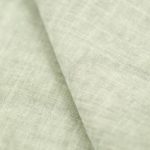If you've ever wondered about the difference between combed and regular cotton, you're not alone. Both are popular choices, but do you know which one is better?
In this guide, we'll break down the key factors to consider when choosing between combed cotton and regular cotton. From the basics of cotton to the quality and durability comparison, we'll help you understand the differences and make an informed decision.
Whether you prioritize comfort, softness, or longevity, we'll explore the aspects that matter most. By the end, you'll have the knowledge to confidently select the best option for your needs.
Key Takeaways
- Combed cotton is softer and higher quality compared to regular cotton.
- Combed cotton has better absorbency and vibrant coloration.
- Combed cotton is more resistant to pilling and fraying.
- Combed cotton has a longer lifespan and is less prone to wear and tear compared to regular cotton.
The Basics of Cotton
Why is the quality of cotton important when choosing between combed cotton and regular cotton? Understanding the basics of cotton is crucial in making an informed decision. Cotton fibers are the building blocks of this versatile material and play a significant role in determining the overall quality of the fabric. When it comes to combed cotton versus regular cotton, the difference lies in the manufacturing process and the quality of the fibers.
Cotton fibers, the essential raw material in textile manufacturing, can vary in length, strength, and fineness. Combed cotton undergoes an additional process where shorter fibers and impurities are removed, resulting in a finer, stronger, and more compact yarn. On the other hand, regular cotton may contain a mix of short and long fibers, as well as impurities, which can affect the fabric's strength and smoothness.
Understanding these fundamental differences in cotton quality is crucial in determining the best option for your needs. Whether it's for clothing, bedding, or other textile products, the quality of cotton can significantly impact the comfort, durability, and overall performance of the end product.
Understanding Combed Cotton
So, what exactly makes combed cotton different from regular cotton?
Well, combed cotton is combed to remove impurities and shorter fibers, resulting in a softer and higher quality fabric. This process not only enhances the fabric's softness, but also provides a smoother surface, making it ideal for clothing and bedding.
Combed for Softness
To understand combed cotton and its softness, you start by examining the process of how it is made. Combed cotton undergoes an additional step where the fibers are meticulously combed to remove impurities, leaving only the longest and finest fibers. This results in a smoother, stronger, and more compact yarn, ultimately leading to a softer and more luxurious fabric. The table below provides a visual representation of the key differences between combed cotton and regular cotton in terms of fabric softness, cotton fiber strength, and comfort evaluation.
| Fabric Softness | Cotton Fiber Strength | Comfort Evaluation | |
|---|---|---|---|
| Combed Cotton | Softer | Stronger | More Comfortable |
| Regular Cotton | Less Soft | Weaker | Less Comfortable |
Removes Impurities for Quality
Combed cotton undergoes a meticulous combing process to remove impurities, which has several benefits for fabric quality and durability. Firstly, this fiber purification method significantly enhances the quality of the cotton used in textile production. The removal of shorter fibers and impurities through combing results in a stronger, more compact yarn. As a result, the fabric produced from combed cotton is of higher quality.
Secondly, the combing process improves the durability of combed cotton fabric. By eliminating impurities, the fabric becomes more resistant to pilling and fraying. This ensures that garments made from combed cotton last longer, even with frequent use and washing.
Additionally, combed cotton has better absorbency due to the removal of impurities. This allows the fabric to absorb dyes more effectively, resulting in vibrant and long-lasting coloration.
Understanding the meticulous process of combing cotton fibers provides insight into the superior quality and durability of combed cotton textiles.
Exploring Regular Cotton
When you compare combed cotton to regular cotton, you will find that regular cotton is the more commonly used type in the textile industry. Regular cotton manufacturing involves a simpler process compared to combed cotton, making it more cost-effective and widely available. However, this method of manufacturing tends to produce a lower-quality fabric due to the presence of impurities and shorter fibers. Moreover, the environmental impact of regular cotton production is a cause for concern. It often involves the use of more pesticides, fertilizers, and water, contributing to soil and water pollution. Here's a visual representation of the differences between combed cotton and regular cotton:
| Aspect | Combed Cotton | Regular Cotton |
|---|---|---|
| Manufacturing Process | Removes impurities, longer fibers | Simpler process, shorter fibers |
| Fabric Quality | High-quality, softer, more durable | Lower-quality, rougher texture |
| Environmental Impact | Less pesticide and water usage | More pesticide and water usage |
Despite being the more common choice, regular cotton's impact on the environment and the quality of the fabric should be carefully considered.
Quality and Durability Comparison
When it comes to the quality and durability of combed cotton versus regular cotton, there are a few key points to consider.
The differences in fiber strength can impact the longevity and wear of the fabric, so it's important to understand how these compare between the two types.
Additionally, the resilience of the fabric is another factor to take into account when assessing the overall quality and durability.
Fiber Strength Differences
You'll notice that combed cotton typically has a higher fiber strength compared to regular cotton, providing superior quality and durability. This is due to the fabric construction process, where combed cotton undergoes an additional step to remove short fibers and impurities, resulting in longer, more durable fibers.
- Enhanced Durability: Combed cotton's higher fiber strength makes the fabric more resistant to tearing and pilling, ensuring that your clothing lasts longer and maintains its quality even after multiple washes.
- Superior Quality: The increased fiber strength of combed cotton results in a smoother, finer, and more uniform fabric, providing a luxurious feel and improved overall quality.
- Better Performance: With its enhanced durability, combed cotton is better suited for everyday wear and can withstand the rigors of frequent use without compromising on comfort or appearance.
Longevity and Wear
As you compare combed cotton and regular cotton for longevity and wear, it's important to consider the differences in quality and durability between the two fabrics.
Combed cotton, due to its extra processing, tends to be more durable and have a longer lifespan compared to regular cotton. The combing process removes shorter fibers and impurities, resulting in a smoother and stronger yarn that's less prone to pilling and wear and tear.
On the other hand, regular cotton, while still a durable fabric, may not hold up as well over time, especially with frequent use and washing.
When it comes to longevity comparison, combed cotton generally outperforms regular cotton, making it a favorable choice for those seeking quality and durability in their clothing and textile products.
Fabric Resilience Comparison
In terms of fabric resilience and durability, combed cotton maintains its advantage over regular cotton due to the removal of shorter fibers and impurities during the combing process, resulting in a smoother and stronger yarn that's less prone to pilling and wear and tear. When comparing fabric strength and wear resistance between combed and regular cotton, consider the following:
- Longer Fibers: Combed cotton's longer fibers contribute to its superior fabric strength, making it more resistant to stretching and tearing.
- Reduced Pilling: The smoother yarn of combed cotton reduces the likelihood of pilling, ensuring that the fabric retains its pristine appearance for longer periods.
- Enhanced Durability: Combed cotton's ability to withstand frequent washing and prolonged use without showing signs of wear and tear makes it a reliable choice for long-lasting garments.
Combed cotton's superior fabric resilience and durability make it an excellent choice for high-quality, long-lasting clothing.
Comfort and Softness Evaluation
Evaluate the comfort and softness of combed cotton and regular cotton to determine which is better for your needs.
Softness evaluation is a crucial factor when choosing between these two types of cotton. Combed cotton, due to its extra production steps, is often softer to the touch compared to regular cotton. The process of combing removes shorter fibers and impurities, resulting in a smoother and more luxurious feel. When it comes to tactile comfort, combed cotton generally provides a more pleasing sensation against the skin.
However, regular cotton, while not as refined, still offers a comfortable and soft texture. It may have a slightly coarser feel in comparison to combed cotton, but it remains a popular choice for many due to its natural softness and breathability.
Ultimately, the comfort and softness of combed cotton and regular cotton depend on personal preferences and specific needs. Consider the level of softness and tactile comfort you desire when making your decision.
Making the Best Choice
To make the best choice between combed cotton and regular cotton, consider your specific fabric preferences and intended use. When making decisions about fabric selection, it's important to take into account the following factors:
- Comfort and Softness: Think about the level of softness and comfort you desire from your clothing. Combed cotton is smoother and softer due to the removal of shorter fibers and impurities, while regular cotton may have a slightly rougher texture.
- Durability and Strength: Assess the intended use of the fabric. Combed cotton, being stronger and more durable, is ideal for items that undergo frequent washing or are subject to wear and tear. Regular cotton, on the other hand, may be suitable for less demanding applications.
- Budget and Value: Consider your budget and the value you place on fabric quality. While combed cotton generally comes at a higher price point due to its refined production process, it offers superior quality and longevity.
Frequently Asked Questions
What Are the Specific Benefits of Combed Cotton for People With Sensitive Skin or Allergies?
If you have sensitive skin or allergies, the benefits of combed cotton in clothing are significant. It's smoother and softer, reducing irritation. The longer fibers are also less likely to cause allergic reactions, making it suitable for those with skin sensitivities.
Can Combed Cotton Be Used for All Types of Clothing, or Are There Certain Items It Is Better Suited For?
Combed cotton is versatile, suitable for various clothing. It's great for everyday wear like t-shirts and underwear due to its softness and durability. Proper fabric care and maintenance tips will ensure your combed cotton clothing lasts.
Are There Any Environmental or Sustainability Differences Between Combed Cotton and Regular Cotton?
When it comes to environmental impact, combed cotton and regular cotton have differences. Combed cotton undergoes an extra process, using more resources. However, sustainability practices in both types can mitigate environmental impact, making them more eco-friendly options.
How Does the Cost of Combed Cotton Compare to Regular Cotton, and Is It Worth the Investment?
When comparing the cost of combed cotton to regular cotton, consider the long-term durability. Combed cotton may have a higher initial cost, but its durability can make it a worthwhile investment in the long run.
Are There Any Special Care Instructions for Maintaining the Quality of Combed Cotton Compared to Regular Cotton?
For maintaining the quality of combed cotton compared to regular cotton, follow special washing, drying, ironing, and storage care instructions. These steps are crucial in ensuring the long-term quality maintenance of your cotton products.
- How Does Ring Spun Cotton Affect Garment Fit and Shape Retention? - August 13, 2024
- What Are the Challenges in Producing Ring Spun Cotton? - August 13, 2024
- Is Ring Spun Cotton Suitable for Plus-Size Clothing? - August 13, 2024






